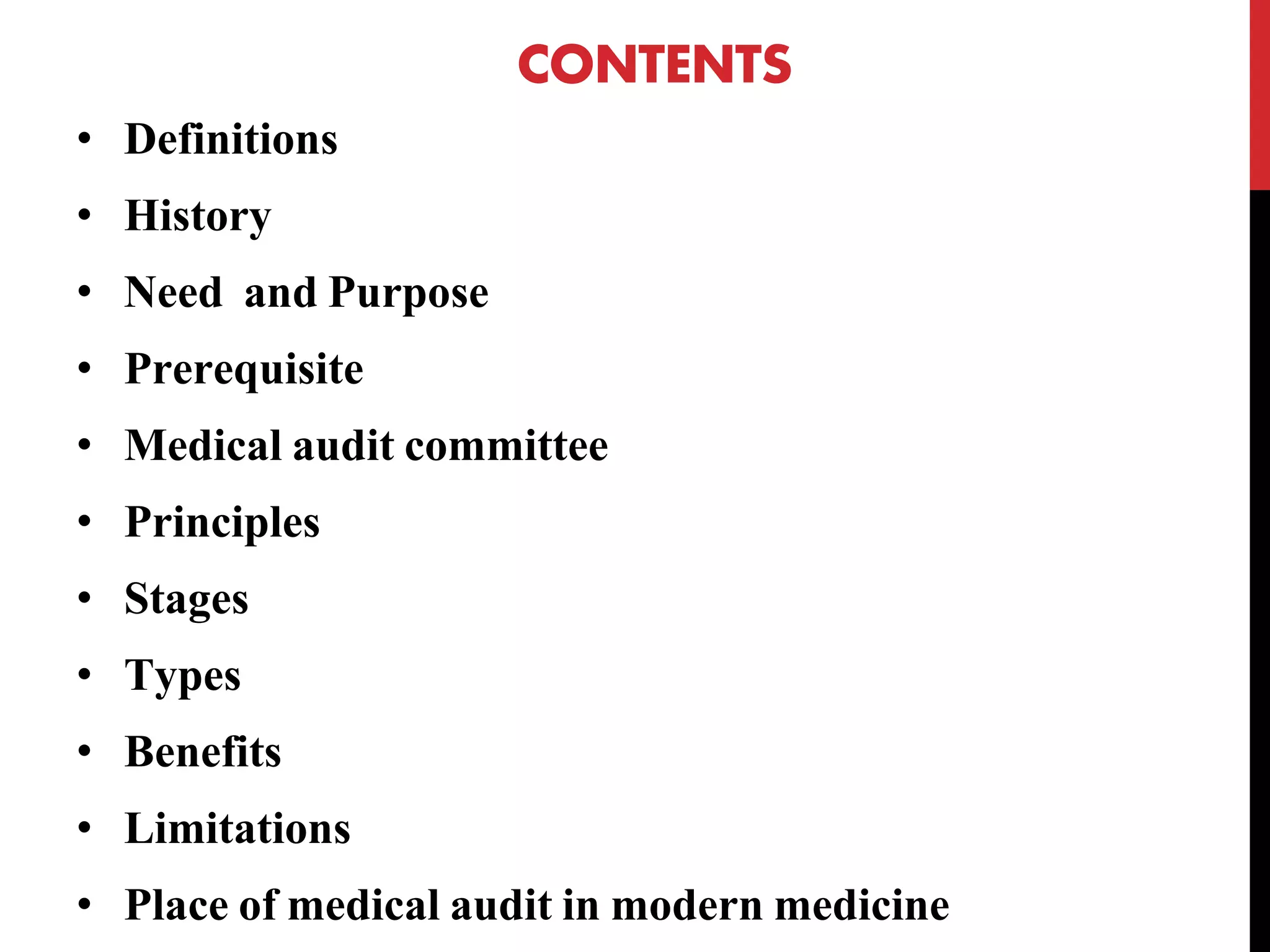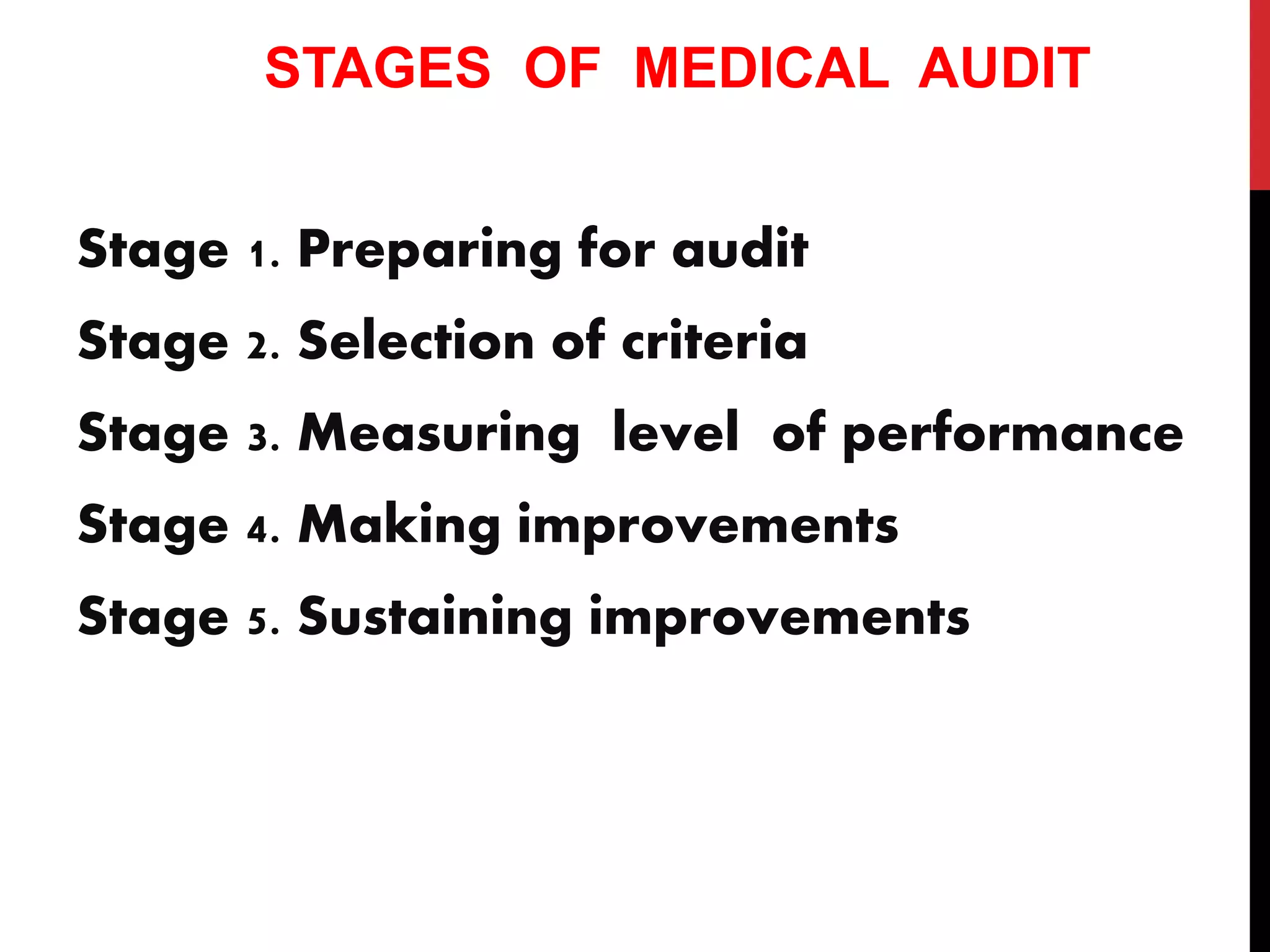This document provides an overview of medical audit, including:
- Definitions of medical audit as the retrospective evaluation and analysis of medical records to monitor clinical performance.
- The history of medical audit from ancient codes to its modern establishment in India in 2007 through the National Accreditation Board for Hospitals.
- The purposes of medical audit which include planning improvements, ensuring regulatory standards, and assessing health program effectiveness.











































































![• Ashwini NS, Vemanna NS, Vemanna P. The Basics in
Research Methodology: The Clinical Audit. JNMR
2011;5(3).679
82.http://www.ncbi.nlm.nih.gov/pmc/articles/PMC2586542/p
df/rcgpoccpaper00060-0005.pdf
• Sanazarop J.Medical Audit, Continuing Medical Education
and Quality Assurance. West. J. Med1976; 125.241-52,
• Undertaking a clinical audit project: a step-by-step guide e
book chapter 2 [cited on june. 2016] available from
http://www.rcpsych.ac.uk/pdf/clinauditchap1.pdf.
• clinical audit [cited on june .2016] available from
https://en.wikipedia.org/wiki/Clinical_audit
• Medical audit in general practice [cited on july 2 2016]
available from
http://www.ncbi.nlm.nih.gov/pmc/articles/PMC2586542/pdf/r
cgpoccpaper00060-0005.pdf](https://image.slidesharecdn.com/medicalaudit-170926084358/75/Medical-audit-76-2048.jpg)






